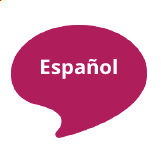
This is part of a project Disasters: The Stories we Share, funded by the National Endowment for the Humanities. The purpose of the project was to find a way to develop collaborative, traveling exhibits.


Photographs and Pamphlet about Nuclear Fallout- National Archives
The Cold War- Library of Congress
Teacher’s Guide
To help your students analyze these primary sources, get a graphic organizer and guides: Analysis Tool and Guides
In the years after World War II, the rise of atomic weapons, along with competing political and economic ideologies from two global powers – the United States and the Soviet Union – set into motion an era of competition and mistrust known today as the Cold War. The United States exerted its power and influence over a number of countries, including much of Western Europe, while the Soviet Union dominated life in Eastern Europe. As more countries successfully tested nuclear weapons, nuclear drills and fear of nuclear war became a way of life.
In the U.S., concerns that communism might take hold in American life led to investigations and legislation to curtail membership in or association with communist organizations. The U.S. also attempted to limit the reach of communism abroad by instituting policies that directed aid to allied countries or those countries they hoped to keep aligned with United States’ interests.
Concerns about nuclear war and keeping civilians safe led to the development of recommendations that are still used today.
Ready Kids has information, activities to help students stay safe during a disaster.

Español (Spanish) - Recursos disponibles en español (Resources available in Spanish). Explore
